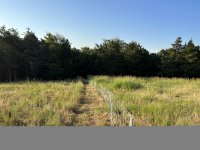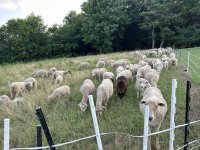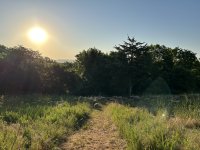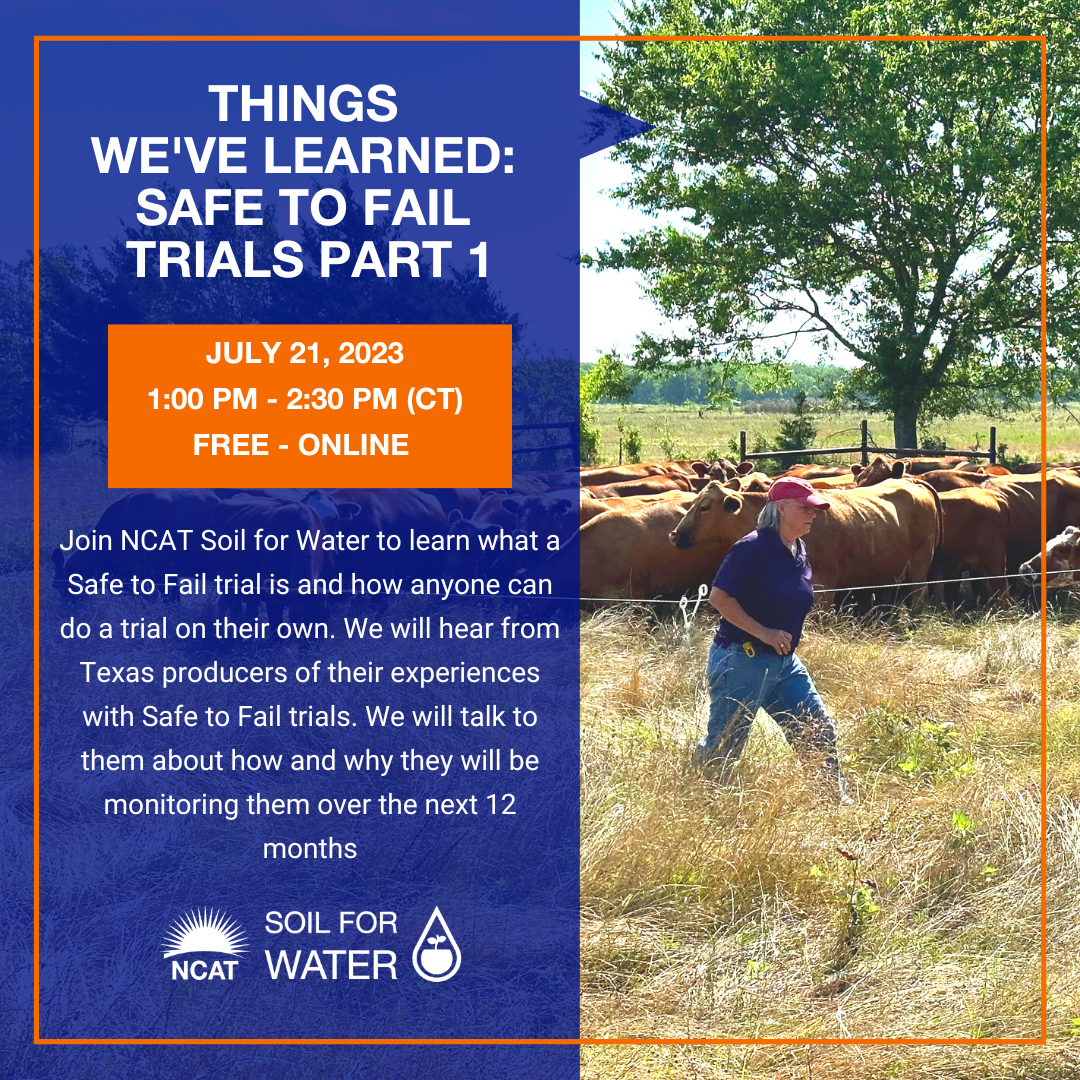Wonderful post and pictures, Linda Coffey! What a nice flock of sheep! Being a lifelong Northerner, I hesitate to pitch in with ideas. But I love to think about this stuff with other shepherds, so of course I'll give it a whirl!
Up here in Montana, if I have too much bare ground in a tamegrass pasture, I often put out a round bale of grass/alfalfa (species I want to colonize the site) and let the sheep turn it into a pre-fertilized mulch. I've also had some success with the idea you mention: broadcast seeding desirable, site-adapted species (heavy on the early successional plants that can colonize the site without delay) then mulching it with straw. Usually these patches will come up with weedy annual forbs the next growing season, but the sheep love those and quickly the patch grasses over.
I wonder about experimenting with a small
Safe-to-Fail plot, as described by Graeme Hand. I know you're very familiar with the technique, Linda, but for readers who might not be, basically the concept is using a very intense, very short burst of animal impact in a small area to see if that will press "reset" on a stalled out ecosystem. The land is then completely rested from livestock grazing for an extended period of time -- months or maybe even a year or two -- to observe the outcomes of this ultra-high density grazing burst on your property.
Doing this on bare ground isn't the usual approach, so you'd have to think through how to adjust the parameters accordingly. Maybe by unrolling a bale of grass/legume hay first, penning the sheep on it for a few hours until the residual hay is well stomped into soil armor and charged with nutrients, and then pulling the sheep off and observing how the site recovers over time?
Alternatively, Alejandro Carrillo recommends focusing our efforts on places of higher production and biodiversity, and then building out from there. Rather than trucking inputs (straw or hay) into the bare spots themselves, maybe consider how you could let the sheep migrate the productivity toward the bare areas. I do this at my place by night penning sheep onto low productivity areas. They ruminate and rest overnight on the bare spot, dropping manure and urine in a concentrated area. Doesn't take but a night or two in one place to create conditions to really rev up the life below ground! In the marvelous book
Hoofprints on the Land, Ilse Kohler-Rollefson relates how overnight dunging has been a crucial part of creating soil fertility in India, Africa, and the Middle East for centuries.
And lastly, speaking as a wildlife biologist, I think it's valuable to start by questioning whether the amount of bare ground in a pasture is a problem or a promise to the biodiversity and ecosystem function of the area. So many of our native insects and wildlife value a mosaic of vegetation heights and densities. Some species of birds need lots of high-protein, high-fat insects to feed their nestlings and fledglings. At least in the Western U.S., those insects are often more available to birds in areas of reduced vegetation -- basically, some bare patches sprinkled amongst a healthy grassland provide easy hunting grounds which can be exploited by wildlife for foraging. So I don't sweat having some areas of sparse vegetation -- it's just a question of balance and meeting my overall goals for my own place.
I'd love to hear what you decide to about the bare areas, Linda, so I can learn more about your Arkansas grazing practices!











